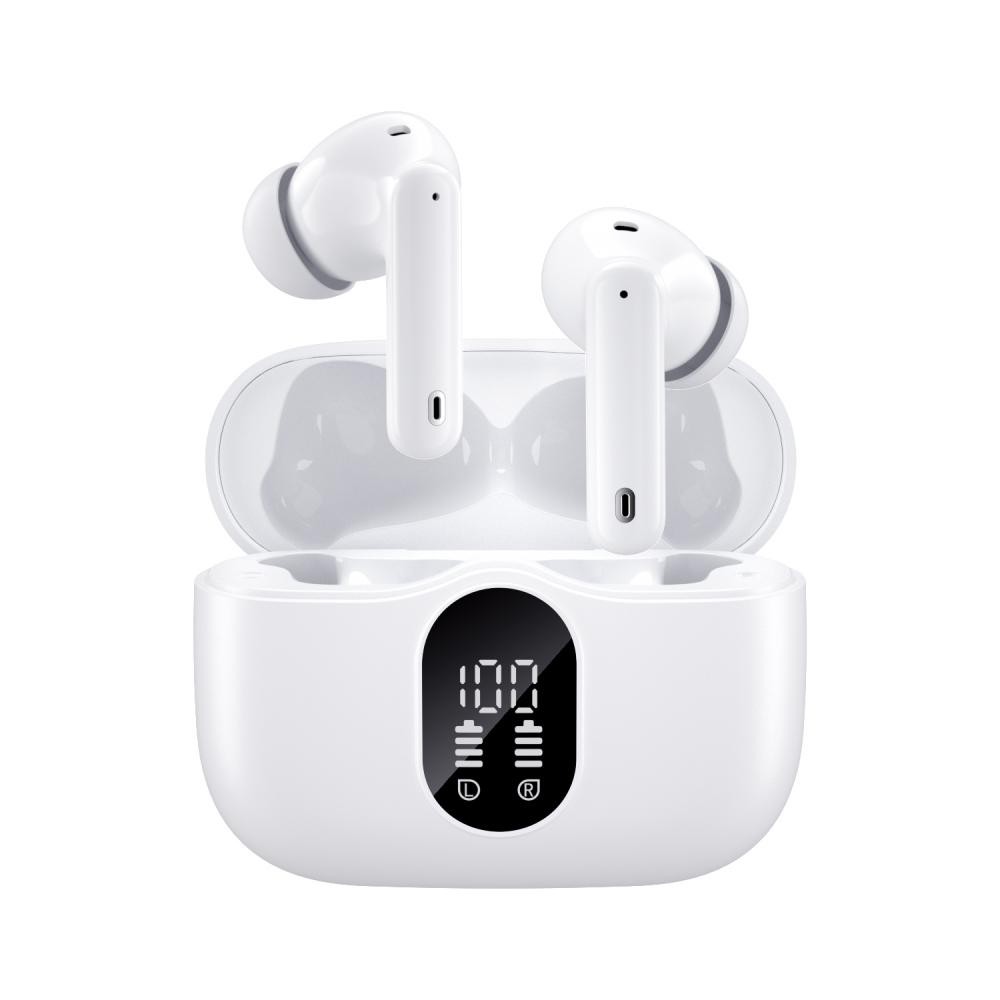Neurodegenerative Disease-Detecting Earbuds : high-tech earbuds
[ad_1]
Table of Contents:
1. Introduction
2. Development of PANDA Earbuds
3. How the PANDA Earbuds Work
4. Advantages of the PANDA Earbuds
5. Potential Applications for PANDA Earbuds
6. Conclusion
7. FAQs
Introduction:
Alzheimer’s and Parkinson’s diseases are two of the most debilitating and life-changing conditions that can afflict an individual. Millions of people worldwide are affected by these neurodegenerative diseases, and the vast majority of them are elderly individuals. Unfortunately, these diseases have no known cure, and detecting their onset has been a significant challenge for medical professionals for decades. However, researchers from Aarhus University, Rigshospitalet University, and the health technology firm T&W Engineering have developed a potential solution that could revolutionize the way we detect and treat these conditions: PANDA earbuds.
Development of PANDA Earbuds:
The Progression Assessment in Neurodegenerative Disorders of Aging (PANDA) project was initiated in 2016 with the aim of developing and refining tools for early and accurate diagnosis of neurodegenerative diseases. One of the notable achievements of the project is the development of earbuds that can monitor electrical activity in the brain. This technology is based on the concept of EEG, which is a non-invasive process of recording electrical signals in the brain. By recording the electrical activity in the ear canal, the PANDA earbuds provide a more comfortable and less obtrusive alternative to the traditional electrodes used in EEG machines.
The development of PANDA earbuds required expertise from multiple disciplines, including neurology, engineering, and computer science. The earbuds themselves are not dissimilar to regular earbuds, except that they have electrodes embedded in them to monitor brain activity. The PANDA earbuds are wirelessly connected to a small portable device that can be worn around the waist, which records and transmits the data to a computer for analysis.
How the PANDA Earbuds Work:
The PANDA earbuds work by recording electrical signals in the ear canal, which are generated by the brain. The ear canal is an ideal location for such recordings as it is close to the brain and less prone to noise interference than traditional EEG electrodes. The collected signals are then transmitted to the portable device, where they are analyzed and compared to a database of healthy brain signals. This comparison allows for the detection of deviations that may indicate the onset of neurodegenerative diseases such as Alzheimer’s and Parkinson’s.
In addition to monitoring brain activity, the PANDA earbuds can also collect other physiological data such as body temperature, heart rate, and blood oxygen levels. This enables clinicians to investigate the connection between these physiological measures and the neurological changes that occur in patients with neurodegenerative diseases.
Advantages of the PANDA Earbuds:
There are several advantages to using the PANDA earbuds over traditional EEG machines. Firstly, the earbuds are much less obtrusive than traditional EEG electrodes, making them more comfortable to wear for extended periods, such as during sleep. This extended wear time allows clinicians to collect a higher quality of data, which can lead to more reliable detection of neurological abnormalities. Secondly, the earbuds are wireless and do not require any external power sources, making them more convenient to use than their wired counterparts. Finally, the PANDA earbuds are a lot cheaper than traditional EEG machines, making them more accessible to healthcare providers with limited budgets.
Potential Applications for PANDA Earbuds:
The potential applications for the PANDA earbuds are immense. Early detection of neurodegenerative diseases such as Alzheimer’s and Parkinson’s is crucial in order to provide patients with the best possible care and treatment. The PANDA earbuds offer a much more accessible and convenient option for screening patients for these diseases, which could lead to earlier detection and better outcomes.
In addition to their use in screening for disease, the PANDA earbuds could also be used to monitor the progression of disease in patients undergoing treatment. By using the earbuds to track changes in brain activity and other physiological measures, clinicians can adjust treatment plans as necessary to provide the best possible care to the patient.
Conclusion:
The PANDA earbuds represent a significant breakthrough in the field of neurodegenerative disease diagnosis and treatment. By providing a less obtrusive, more convenient, and more accessible option for detecting neurological abnormalities, clinicians may be able to provide earlier and more effective treatment to patients with Alzheimer’s and Parkinson’s diseases. The potential applications for this technology are vast, and it is exciting to consider where this development may lead in the future.
FAQs:
Q1. Are PANDA earbuds widely available for use in clinics and hospitals?
Currently, PANDA earbuds are still in the development stage and are not widely available for clinical use. However, the project has already yielded promising results, and it is hoped that the technology will become available for clinical use in the near future.
Q2. How expensive are PANDA earbuds compared to traditional EEG machines?
PANDA earbuds are significantly cheaper than traditional EEG machines, making them more accessible to healthcare providers with limited budgets.
Q3. Do PANDA earbuds require any special preparation or training to use?
PANDA earbuds do not require any special preparation or training to use. They are designed to be user-friendly and easy to operate.
Q4. Can PANDA earbuds be used on patients of all ages?
PANDA earbuds are designed to be used on patients of all ages, although their use in pediatric patients may require modifications to the earbud design.
Q5. Are there any risks associated with using PANDA earbuds?
There are no known risks associated with using PANDA earbuds. They are designed to be non-invasive and safe for use in a clinical setting.
[ad_2]









